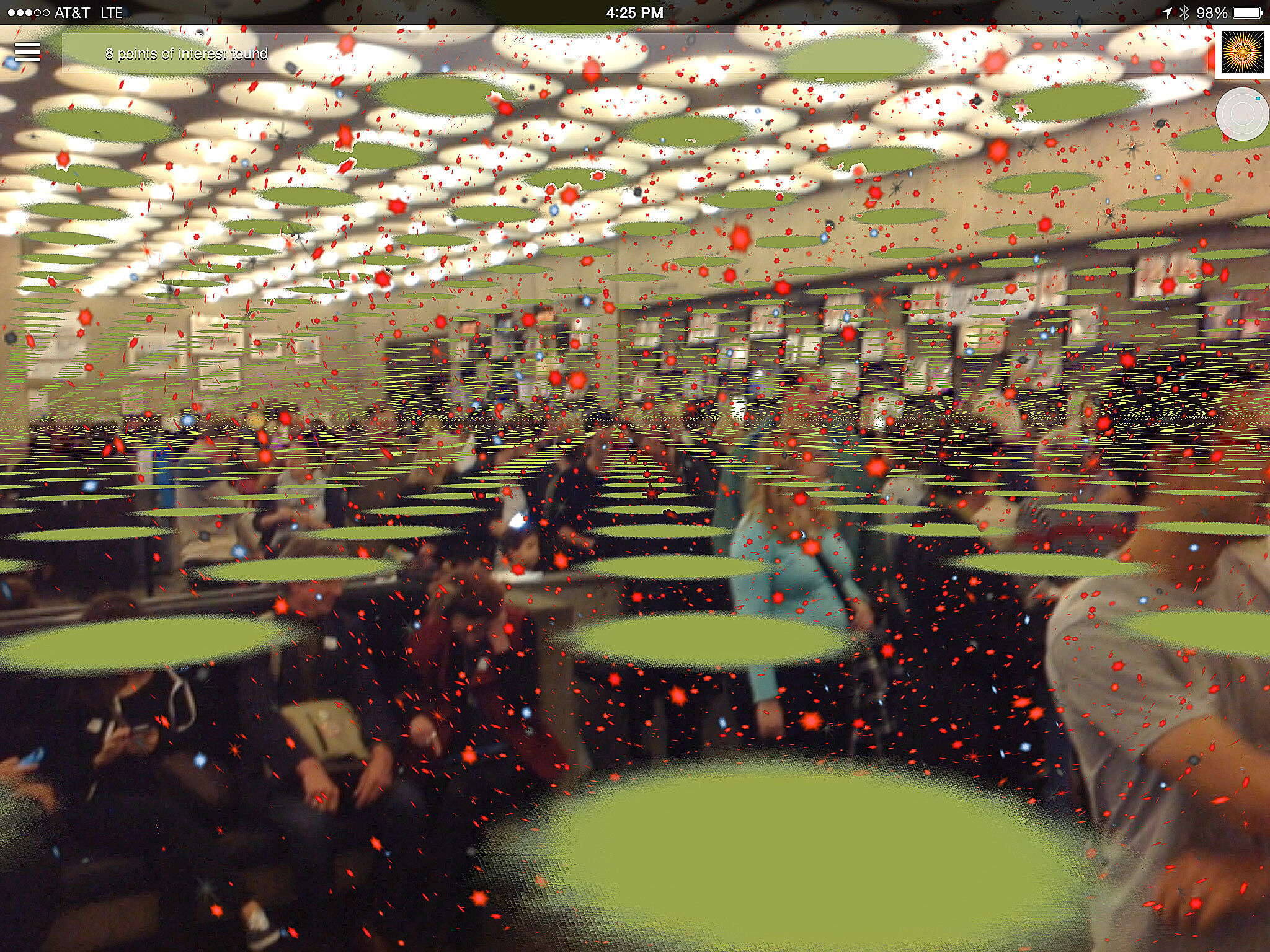Will Pappenheimer: Proxy, 5-WM2A
2014
Will Pappenheimer: Proxy, 5-WM2A
Will Pappenheimer's Proxy, 5-WM2A is a virtual designer drug specifically commissioned for the 2014 Whitney Gala and Studio Party. 5-WM2A (with the “street name” Proxy) can be consumed by guests on their mobile devices and tablets, offering enhanced visionary powers—and a safe experience. As guests view their surroundings through the screen of their mobile devices, hallucinatory virtual elements are overlaid onto the physical environment. The augmented reality application uses these perceptual alterations of the real world to refresh the museum experience. Proxy has been designed as a "dissociative class” designer drug app that helps the Whitney community to leave behind and dissociate from its iconic Breuer location and transition to a new building. Like most designer drugs, Proxy is fashioned to mimic and improve on the effects of the real and at the same time to escape classification as a controlled substance—or, in this case, controlled museum experience. As an artwork Proxy, 5-WM2A is a humorous yet pointed exploration of our addiction to our technological devices, of the accelerated merger of virtual and physical worlds, and of the ways in which these factors change our perception.
Will Pappenheimer is a Brooklyn-based artist and educator working in new media, performance, and installation with an interest in institutional or spatial interventions. His work often explores the confluence of and tension between the virtual and physical worlds. He is a founding member of the Manifest.AR collective and participated in highly publicized augmented reality interventions at the Museum of Modern Art, New York, in 2010 and the 54th Venice Biennale in 2011. Will Pappenheimer has exhibited internationally at institutions, festivals, and galleries including the Stedelijk Museum, Amsterdam; FACT, Liverpool; the Golden Thread Gallery, Belfast; FILE, São Paulo; the Institute of Contemporary Art and the Museum of Fine Arts, Boston; the Corcoran Gallery of Art, Washington; Fringe Exhibitions, Los Angeles; and Exit Art, Postmasters, Vertexlist, and DUMBO Arts Festival in New York. His projects have been commissioned by the Los Angeles County Museum of Art, the San Francisco Museum of Modern Art and the Boston Convention Center's public art project ArtLab on D. His work has been cited and discussed in books—Gregory Ulmer, Electronic Monuments; Christiane Paul, Digital Art—as well as magazines and newspapers such as Art in America, The New York Times, WIRED, Modern Painters, The Boston Globe, EL PAIS, Liberation, NY Arts International, and Art US. He has been a speaker at The New Museum, the Whitney Museum of American Art, and the Eyebeam Art+Technology Center in New York; ETH Institute, Zurich, Switzerland; and a keynote speaker at the Stedelijk Museum, Amsterdam. Pappenheimer is a faculty member in the department of Art and Art History at Pace University, New York.
About augmented Reality (AR)
Augmented Reality is the term used for the enhancement of physical reality through the superimposition of computer-generated elements viewable on a smart phone or tablet, or through a head-mounted display.
Going to the Gala or Studio Party?
Download the Layar augmented reality app to experience Proxy
Proxy will allow visitors to see the museum environment in new, hallucinatory ways. To get the experience on your smart phone or tablet, please download the Layar augmented reality app in advance of the event.
artport
View more on artport, the Whitney Museum's portal to Internet and new media art.

